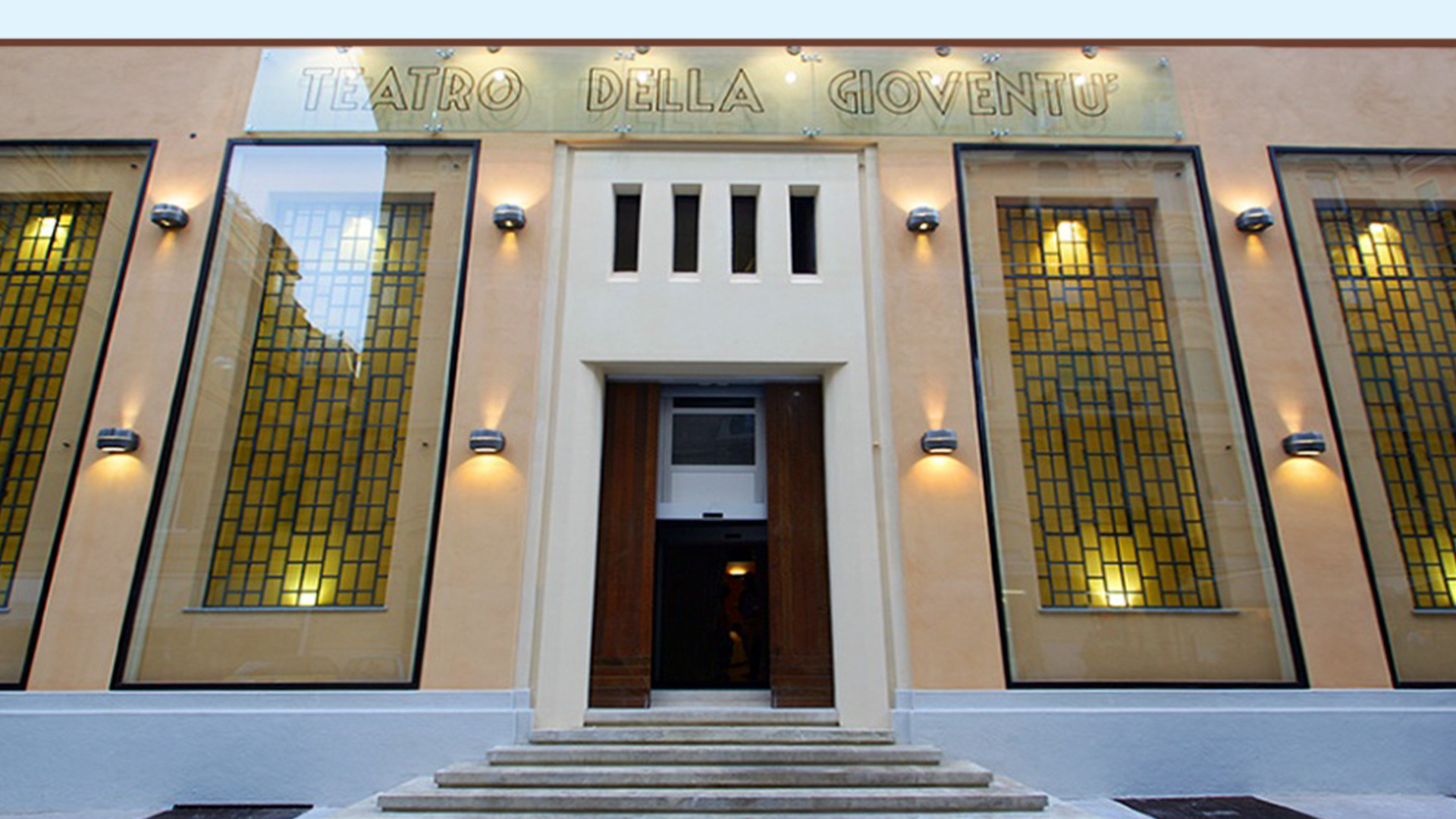MARCO STROPPA
Hidinefte, o l’altra faccia di Traiettoria.
1ª faccia, Recto/Verso
for electronics
Why should you run?
With me
two pieces for solist electronics
absolute premiere
Little i
for flutes and chamber music electronics,
from the cycle The enormous room
Flute
Steven Haschke
Electronics
Marco Stroppa
In collaboration with Conservatorio Niccolò Paganini di Genova
An author’s note
by Marco Stroppa
A phantom thread is hidden across the three musical pieces presented this evening: the one of the evolution of my electroninc world between 1989 and today.
In Hidinefte, some parts of the electronics in Traiettoria(for piano and electronics) have been reprised, organized, equalized and mixed in a different way, generating another form that reveals every nuance possibly hidden by the interaction with the instrument in version with piano. All electronic sounds have been generated with entirely synthetic models (additive synthesis and frequency modulation) The first part (recto) starts in a rythmical and overwhelming way, concluding with a granular and acute sound; the second part (verso) starts in a more silent and quiet manner, ending with an increasingly violent crescendo.
The two following pieces (Why should you run? and With me) are still warm as they just come out of my… compositional oven. Such tracks are taken from the electronic part of Come Play with Me (a concert for soloist electronics and orchestra written in 2019 for the Donaueschingen festival in Germany). In such a context, the soloist was an “electro-acoustic totem”, a column of 7 speakers placed piece by piece, one on top of the other one, functioning towards different directions. On the contrary, in this purely electronic version the soundtrack was “flattened” in 7 horizontal channels. An ascensional movement, for instance, transforms into a from-behind-to-left movement, going through the middle and again from behind to the right. The electronic part consists in sounds generated by physical models (Modalys) which can evoke some basic instrument (reeds, brasses, percussions, strings) or a singing voice. For example, the first track strats with the sonic development of the phonemes “why” – u-a-i, in Italian – (produced with the software OMChant I personally developed) and further expresses through a constant run, a sort of perpetual motion of metallic surfaces hit by rigid sticks which other sweeter sounds overlap with.
Commissioned by Cécile Daroux thanks to Octobre en Normandie festival board, the title little i could also be read as “wink”, besides the fact that the octave-flute instrument is also called “piccolo” in both French and English language, corresponding to the Italian word for “small” (piccolo, literally). Like all pieces for solo instrument and chamber electronics, it is inspired by a poem by the American poet E. E. Cummings (poem 52 from “73 poems”):
who are you, little i
(five or six years old)
peering from some high
window; at the gold
of november sunset
(and feeling:that if day
has to become night
this is a beautiful way).
The term ‘chamber electronics’, of my own invention, suggests a more intimate, chamber-like relationship between the instrumentalist and the invisible electronic sources that surround him and constitute his musical partners. It all takes place on the stage, and not, as in previous electronic pieces, around the audience.
Particular care was taken with the positioning of the flutist in four different positions, as well as the arrangement of the four electroacoustic sources on stage. The various relationships between the flutist, the flute amplification (sometimes located at a distance from the instrument) and the space generated by the electronics (echo, multiplication, distancing, separation, etc.) generate a ‘spatial dramaturgy’ that defines the architecture of the piece.
For example, at the beginning the flutist stands centre stage, but as far back as possible, and plays a slow melodic phrase. The direct sound of the flute is therefore not audible, but its amplification, which is quite loud, comes out of the two loudspeakers in the centre of the front stage. The electronics are also located in the same loudspeakers, but constantly move back and forth between them, thus moving closer to or further away from the instrument itself and creating a kind of ‘tunnel’ effect.
In the third movement, the flutist plays on stage left with a soft, percussive articulation. Its amplification, however, comes out on the opposite side. The dissociation of visual and acoustic signals is therefore horizontal, relative to the audience (in the first movement it was vertical). The electronics here consist of material very similar to that played by the instrumentalist. Structurally, this movement is a canon at different speeds. However, the first ‘voice’ of the electronics comes out of the loudspeaker near the flutist, while the other voices come out in other positions. Given the similarity of the materials, at a certain moment, it is no longer possible to discriminate who is playing which line. The instrument and its virtual partners are inextricably intertwined here.
The overall form shows an arc structure (slow melodic – lively rhythmic – moderate percussive – lively energetic – slow harmonic) with a great variety of combinations between the solo flute or electronic sections and the ensemble parts. In this piece, the electronic material is very simple and consists mainly of bits of flute motifs recorded, spatialised and processed in my personal studio.

